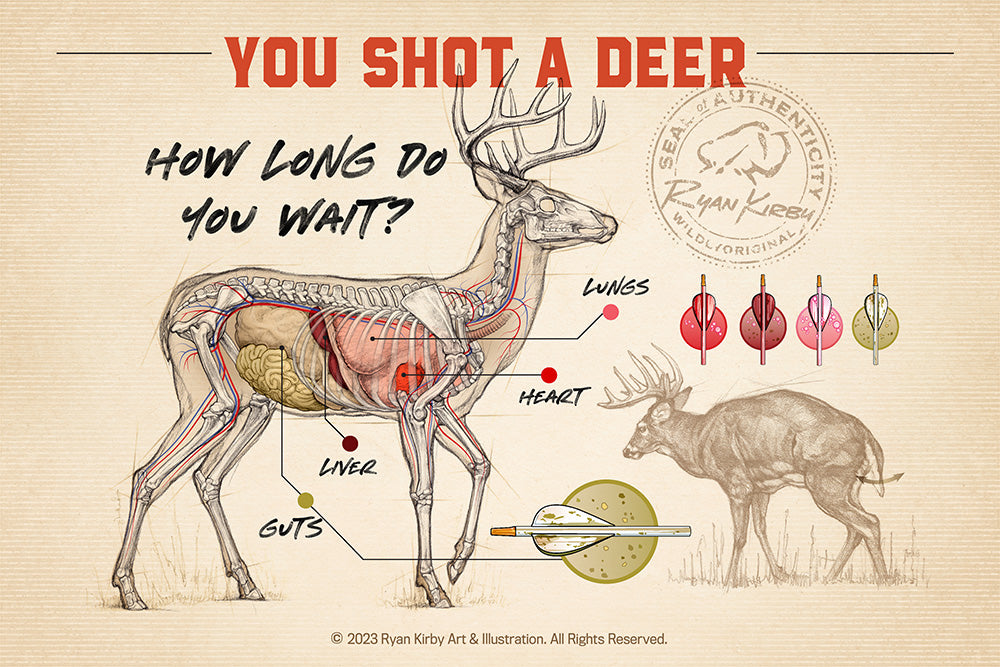What to Do After You Shoot a Deer With A Bow and Arrow
I fell in love with bowhunting as a teenager growing up in the Midwest. Archery is one of life’s purest forms of art, with more fine details and nuances than any oil painting I could ever produce. And nothing is as satisfying as watching the perfect flight of an arrow that lands exactly where you want it.
But like most things in life and art, bowhunting doesn’t always go as planned, and arrows don’t always hit where you want them to. Like Mike Tyson says, “Everyone has a plan ‘til they get punched in the mouth.” This is where it’s important to slow down, regroup and make a game plan on how to proceed. What you do after the shot will largely determine your success as a bowhunter.
To help my fellow bowhunters in the field, here’s a collection of art and information from my popular print, The Anatomy & Physiology of the White-tailed Buck. I spent months researching and drawing deer anatomy for this print, with the help and advice of expert biologists and hunters from across North America.
But before we dive in, here’s a couple big game tracking tips for you that I’ve learned the hard way:
- Watch the deer intensely after the shot. Its behavior in the first 50 yards will tell you a lot about the hit and your next move
- Mark the exact spot that the deer disappears from your view. Deer don’t always start bleeding immediately after being hit, and the last place you saw him might be the first place you find blood. You don’t want to waste time on the wrong trail
- When in doubt, back out. A deer that’s marginally hit will often bed down, and this first bed is your best chance to find them. If you rush in and bump them out of this bed, your odds of recovery shrink dramatically

HEART SHOT
How you know: The buck will likely “mule kick” and sprint away, but will not make it far, likely falling in sight.
Blood Trail: Bright, heavy and short. Color: Crimson red blood, possibly bubbly as you’ll most likely hit a lung as well. Smell: Little, if any odor
Recovery Time: 30 minutes: If you watch the buck fall, recover immediately.

LUNG SHOT
How you know: You’ll often hear a loud “thwack” and the buck will run off, but not far.
Blood Trail: Heavy and frothy, with small bubbles from the oxygen-rich lungs. Color: Pinkish red. Smell: Little to no odor
Recovery Time: 30 minutes for a Double Lung Hit. 6-9 hours for a single lung hit. If you suspect only one lung was it, be careful. Note the buck’s direction of travel, slip out and wait. He’ll likely bed within 200-300 yards and will expire in his first bed, unless he’s spooked out of it.

LIVER SHOT
How you know: You’ll hear a loud “smack” and the buck will run away, often slowing to a walk after running a short distance.
Blood Trail: Spotty and sparse, gradually declining as the trail goes on. Color: Dark red, possibly bubbly if a lung was hit, or gritty if a gut was hit, which often occurs on angled shots. Smell: Potentially some rank odor
Recovery Time: 6-9 hours: If you watch the buck bed, slip out and wait. He’ll likely expire in his first bed and you do not want to bump him out of it.

GUT SHOT (INTESTINES AND STOMACH)
How you know: The buck will arch his back and walk away with his tail tucked, often flicking back and forth.
Blood Trail: Sparse and very hard to follow. Color: Brownish red blood with partially digested food and other stomach matter. Smell: Rank odor from the stomach and/or intestines
Recovery Time: 12-24 hours: If you watch the buck bed, slip out and wait. He’ll likely expire in his first bed, but gut shots take time. It’s often best to wait overnight and begin the search the following day, ideally with the help of a well-trained tracking dog.
NON VITAL HITS: BONE & MUSCLE

BONE
The buck’s skeleton is made up of 327 bones. Without exception, the number one bone a bowhunter must contend with is the shoulder. Tree stand hunters also have to deal with the spine when shooting from an elevated position. Except for a deer hit hard in the spine (which often drops the animal in its tracks and requires a follow-up shot), a shot directly into bone is rarely lethal. It may produce some blood and even bone fragments, but chances are it’s simply a surface wound. You will get little penetration and likely be left with a clean arrow shaft and a broadhead covered with tallow and hide.
The good news: the buck will most likely live to see another day and may even give you another chance down the road.
MUSCLE
Well suited for chasing hot does and evading hungry predators, whitetails are born to run and have the muscles to prove it. They also possess a fantastic leaping ability, made in part by the size and strength of their hind leg muscles.
But those same muscles can also take an arrow and keep on going. Rarely does a shot that doesn’t enter the chest cavity or guts result in a clean kill. However, anyone who lifts weight knows that large muscles demand a healthy blood flow. A buck’s powerful leg muscles also contain large arteries that, when hit, can result in a surprisingly easy blood trail and a quick recovery.
Never purposefully aim for the arteries in the hind quarters, but if you hit one, be thankful for the gift. You’ll walk a highly visible blood trail right to your deer.

As an artist, it’s my passion to enhance the atmosphere of deer camp. The best way I know to do that is through my best-selling paper prints “The Growth & Maturity of the White-tailed Buck" and “The Anatomy & Physiology of the White-tailed Buck.” The above art and information (plus much, much more) can be found in one place that you can hang on the wall. It’s been an honor to produce them, and I guarantee you they’ll be the talk of hunt camp!
Wishing you a successful deer season,

Here's a recent video that talks more about what your arrow will look like and how to proceed with tracking after the shot:


